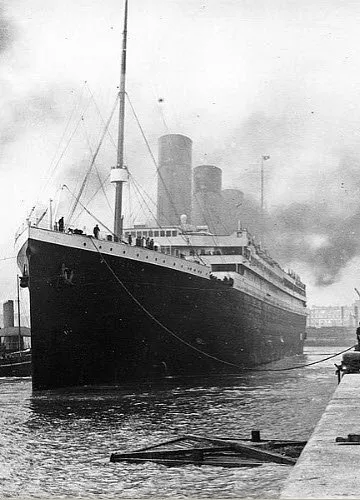Published:
Author: Antonio Maria Guerra
Marsala Wine

Studying a wine, it happens quite often to come across interesting stories: Marsala wine is no exception. Even if it was an Englishman the first to understand its great potential, as English were the first to appreciate it, it was an Italian family who made it famous worldwide: the Florios. Let’s deepen the knowledge of this delicious ‘fortified’ wine. Let’s visit its places. Let’s meet its people.

The history of Marsala wine.
According to the most widely known story, it was the year 1773 when the ship on which Mr. John Woodhouse was travelling, chased by a storm, had to seek refuge in the small port of Marsala.
An accident that proved to be very useful, since it gave to the English merchant the opportunity to taste for the first time the ‘Perpetuum’, a wine usually kept by the locals for special occasions. It was produced in small quantities with a method quite similar to one used in Spain, the ‘soleras’.
This wine was so delicious that Woodhouse decided to commercialize it in England: he started by sending just a few barrels. Some brandy (*1) was added to protect their content from deterioration.
Read more
Woodhouse
As expected, the ‘Marsala’ was much appreciated. Not a big surprise: after all the English people already loved the taste of similar wines like Port, Sherry and Madeira. Woodhouse had to build a factory in Sicily to satisfy the great demand.
Ingham
A few years later, around 1810, another British businessman, Benjamin Ingham, started to produce it. He should be remembered because he was the first to export it outside Europe.
Florio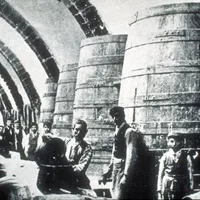 In 1832, Vincenzo Florio bought the land between the factories of Woodhouse and Ingham and built the ‘Cantine Florio’ production plant (*2). The strong competition didn’t discourage him: he was counting on his merchant fleet to ship Marsala worldwide. His success was so great that in a few years he surpassed his rivals, becoming the most important producer.
In 1832, Vincenzo Florio bought the land between the factories of Woodhouse and Ingham and built the ‘Cantine Florio’ production plant (*2). The strong competition didn’t discourage him: he was counting on his merchant fleet to ship Marsala worldwide. His success was so great that in a few years he surpassed his rivals, becoming the most important producer.
Notes:
During time this wine experienced mixed fortunes, much depending on the fashion of the period. Many were the imitation attempts: great part of them stopped in 1931, thanks to an official decree much similar to a designation of origin (*3).
During time this wine experienced mixed fortunes, much depending on the fashion of the period. Many were the imitation attempts: great part of them stopped in 1931, thanks to an official decree much similar to a designation of origin (*3).
*1: Woodhouse cannot be considered the ‘inventor’ of Marsala: the English merchant modified a type of wine that already existed, the ‘Perpetuum’, increasing its alcohol content by adding some brandy.
*2: During the period of its greatest success, between the end of the Eighteenth and the beginning of the Nineteenth Century, Marsala wine was produced by almost forty different companies. Some of the most important were: ‘Rallo’ (founded in 1860), ‘Curatolo Arini’ (founded in 1875) and ‘Pellegrino’ (founded in 1880).
*3: Marsala was the very first Italian wine to be certified.

Marsala Wine
THE MOST TRADITIONAL PRODUCER
This article is the result of collaboration between WebFoodCulture and Cantine Florio / Duca di Salaparuta company, the most traditional producer of the famous specialty.


Wines ‘fortified’ to endure the transport.
Marsala is one of the ‘fortified’ wines: this category includes very famous products, like Port, Madeira and Sherry. They all have in common that their alcohol content is increased, by adding pure ethyl alcohol and/or brandy and/or Mistelle (*1).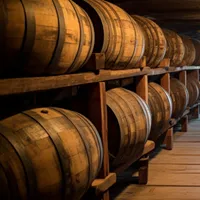 This was a method originally used to make wine ‘stronger’ (‘fortify’), thus protecting it from many of the risks associated with transportation.
This was a method originally used to make wine ‘stronger’ (‘fortify’), thus protecting it from many of the risks associated with transportation.
In the past, barrels could linger for many weeks in the cargo hold of a merchant ship: during this time their content was exposed to an extremely hostile environment. Rough movements, sudden changes of temperature and contaminations could ruin the wine, making it undrinkable. By adding some alcohol, it was both ‘stabilized’ (any unexpected fermentation was blocked) (*2), and ‘protected’ (thanks to its antiseptic properties).
Notes:
*1: Mistelle is a mix of alcohol and unfermented (or partially fermented) must.
*2: Alcohol blocks yeasts, responsible for the natural process known as ‘fermentation’.
Marsala: the birthplace of Marsala wine.
Marsala takes its name from that of the town where the first factories for its production were built. This town is located in the province of Trapani, in the westernmost part of the Italian region of Sicily.


Marsala wine and Garibaldi.
The eleventh of May 1860, one thousand soldiers, the famous ‘Redshirts’ (‘Camicie Rosse’), led by the General Giuseppe Garibaldi, arrived in the port of Marsala. The military expedition that started the unification of Italy had begun. Though never admitted, the landing of these soldiers was implicitly protected by two warships of the Royal Navy at anchor outside the port: the HMS Argus and the HMS Intrepid. It was the British Vice Consul Richard Cossins that asked for their presence to defend the safety (and the interests) of his fellow citizens.
Notes:
What a ‘coincidence’: Cossins was not just Vice Consul, but also the director of the local Ingham wine factory. Fearing that some cannon shots could damage his production facility, he took all the precautions he could to stop the Bourbon Navy from firing on the invading troops (*1).
While the local people, terrified by the Redshirts, barricaded themselves in their houses, a delegation of British citizens led by Cossins greeted Garibaldi and his troops. It is said that he offered a glass of Marsala to the General (*2) and that he appreciated it very much (*3).
A particular type of sweet Marsala ‘Superiore’ was nicknamed ‘Garibaldi Dolce’ (Garibaldi sweet) to celebrate this event.
Notes:
*1: King Francis II of the Two Sicilies, speaking about Cossins, said that he was more worried for his salary than for his people;
*2: It’s quite possible that the wine offered to the general had been produced by the local Ingham factory;
*3: Some historians think that Garibaldi was almost abstemious. Recent studies explain that in truth he had no problems with alcohol, he was just not used to drink during the military campaigns;

Marsala: Nelson’s ‘Victory wine’.
The famous Adrmiral Horatio Nelson used Marsala as his ‘victory wine’, to toast at the end of a battle. He loved it so much he once said “this is a wine worthy of any gentleman’s table”. That’s probably why he decided to supply the entire Royal Navy with it.

The Florios: producers of Marsala and undisputed protagonists of the 'belle epoque'.
The story of the Florios lasts more than a century, from the beginning of the Nineteenth up to the mid of the Twentieth: it’s so fascinating it could be used as the script for a movie.
Step by step and with great skill, some of the members of this family built a huge business empire, embracing multiple sectors. They became so rich and powerful to be undisputed protagonists of the ‘Belle Epoque’.
Read more
The Belle Epoque
The ‘Belle Epoque’ lasted about fourty years, from 1871 to 1914. During this period the states of Europe remained in peace, creating the best conditions for an incredible economic and cultural development. Scientific and technological discoveries gave hope in a bright future for all mankind. An euphoric mood started to radiate from the center of the continent: Paris.
Style, culture and wealth
In this particular historical context, a small group of wealthy and influential people had the opportunity to live like in a dream: the Florios were among them. Even if they spent great part of their time in Sicily, a place quite distant from Paris, they were so famous for their style and culture to be surrounded by the most important personalities of their time.
This beautiful dream was shattered by the explosion of the First World War: a tragic event that caused the end of the ‘Belle Epoque’ and the decline of this incredible family.

Interesting facts about the Florios.
Here follow some interesting facts about the Florio family:
- A modern factory: In 1840, Vincenzo Florio founded a cotton spinning mill and recruited more than 700 women. This factory soon became famous for the revolutionary way its workers were treated: they had a nursery, a lunchroom and even an insurance fund. All innovative services for that period;
Read more
Donna Franca and the Kaiser: The Kaiser of Prussia Willhelm II was a great admirer and a good friend of Donna Franca Florio. Legend says that, during one of her visits to Vienna, he gave her as a token of affection one of the horns he used on his cars. This way, when she moved around the capital with her car, people would bow, mistaking her for the king;
Aegusa and Ignazio Jr.: ‘Auegusa’, the ancient name of the island of Favignana, was particularly dear to Ignazio Jr. He used it for the yacht he loved most (he had many of them) and for the best quality of Marsala produced by his company;


The Florios: the history of the 'Lions of Sicily'.
The Florios were originally from Bagnara Calabra, a small village in the south Italy. After the disastrous earthquake of 1783, they moved to the city of Palermo, in Sicily: here, the two brothers Ignazio and Paolo, started a grocer’s shop. Unfortunately Paolo died quite soon, leaving to Ignazio the business and his son Vincenzo.
Understanding the great potential of tuna trade, Ignazio bought two factories, the ‘San Nicola’ and the ‘Vergine Maria’. It was the right choice: this business earned him a small fortune, money that he left to his nephew, when he died in 1828.
Vincenzo Florio and the Marsala wine.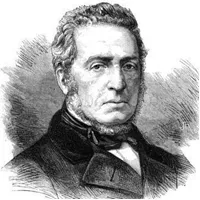 Vincenzo invested all the money he inherited: he started buying another tuna factory located on the island of Favignana. Later, he entered the businesses of tobacco, cotton and maritime transports.
Vincenzo invested all the money he inherited: he started buying another tuna factory located on the island of Favignana. Later, he entered the businesses of tobacco, cotton and maritime transports.
One of his most successful commercial initiatives was the production of Marsala wine. Thanks to his merchant fleet, he exported it worldwide, and in a few years his company became the most important.
Read more
Ignazio Sr. and the Egadi Islands.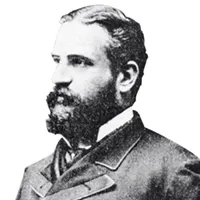 Vincenzo died in 1868, leaving a huge fortune, almost 300 millions lire, to his firstborn Ignazio (known as ‘senior’ to distinguish him from his son).
Vincenzo died in 1868, leaving a huge fortune, almost 300 millions lire, to his firstborn Ignazio (known as ‘senior’ to distinguish him from his son).
When he married the baroness Giovanna D’Ondes, the Florios officially joined the inner circle of the Palermitan aristocracy. It has to be said that the family remained proud to belong to the entrepreneurial middle class.
In 1874, Ignazio bought for 2.700.000 lire the Egadi Islands and the exploitation rights of the surrounding sea. He also ordered the construction of the family palace on Favignana, entrusting the project to the famous architect Damiani Almeyda. The same architect designed for him the Marsala production plant and the Saint Anthony’s Church.
Ignazio Jr. takes on the business.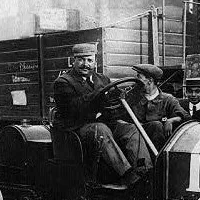 When Ignazio Sr. died in 1891, he left a huge fortune to his three sons: Giulia, Vincenzo and Ignazio. Since the first two spent all the time after their interests (*1), it was up to Ignazio Jr. to take on the family business.
When Ignazio Sr. died in 1891, he left a huge fortune to his three sons: Giulia, Vincenzo and Ignazio. Since the first two spent all the time after their interests (*1), it was up to Ignazio Jr. to take on the family business.
He started building the Palermo shipyards (active still today) and acquiring sulfur mines in Caltanissetta. In 1897 he completed the Teatro Massimo in Palermo, whose construction was started by his father. In 1900, he founded ‘L’Ora’: a journal of great importance for the South of Italy, that could count on correspondents from all over Europe and the writings of famous authors like Matilde Serao, Luigi Pirandello, Salvatore Di Giacomo and Giovanni Verga.
Donna Franca and the Belle Epoque in Sicily.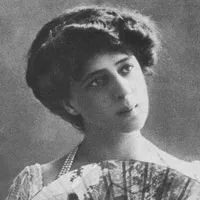 Thanks to ‘Donna Franca’, wife of Ignazio, the Florios joined the international high class society. Franca Jacona della Motta dei Baroni di San Giuliano, was a member of the oldest and finest Sicilian aristocracy: a woman very beautiful and of great intelligence. Admired like a queen, she was nicknamed ‘star of Italy’ by the Kaiser Wilhelm II. Her style and culture (supported by the great wealth of Ignazio), attracted a lot of famous people to Sicily (*2). All the most important personalities of the time, sooner or later, visited her. Among them: the Czar of Russia, the Kaiser of Prussia and the King of Italy, but also intellectuals like Gabriele D’Annunzio and artists like the tenor Caruso.
Thanks to ‘Donna Franca’, wife of Ignazio, the Florios joined the international high class society. Franca Jacona della Motta dei Baroni di San Giuliano, was a member of the oldest and finest Sicilian aristocracy: a woman very beautiful and of great intelligence. Admired like a queen, she was nicknamed ‘star of Italy’ by the Kaiser Wilhelm II. Her style and culture (supported by the great wealth of Ignazio), attracted a lot of famous people to Sicily (*2). All the most important personalities of the time, sooner or later, visited her. Among them: the Czar of Russia, the Kaiser of Prussia and the King of Italy, but also intellectuals like Gabriele D’Annunzio and artists like the tenor Caruso.
The end of a dynasty.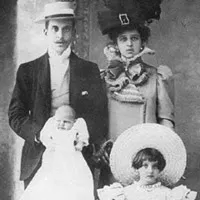 The brilliant life of Franca and Ignazio was deeply marked by the death of three of their children: tragic events that left them without a male heir.
The brilliant life of Franca and Ignazio was deeply marked by the death of three of their children: tragic events that left them without a male heir.
After the First World War, also the business started to go wrong: a slow decline, due to unlucky investments and, more in general, to the shift of economic power from the South to the North of Italy. Taxes and strikes gave the final blow to the family fortunes: to repay their huge debts, they had to sell almost everything, including the famous jewels of Donna Franca.
The death of Ignazio in 1957, followed two years later by his brother Vincenzo, put an end to the story of the Florios.
Notes:
*1: Vincenzo had a great passion for cars: so much to organize the famous ‘Targa Florio’ race.
*2: During the ‘Belle Epoque’, the city of Palermo became one of the favourite places of the European elite.

Consorzio del Parmigiano Reggiano: contacts.
CANTINE FLORIO
Address: Via V. Florio, 1, 91025 Marsala (Trapani)
Website: www.duca.it/florio
Mail: visitaflorio@duca.it
Tel.: +39 0923 781305
Address: Via Nazionale s.s.113, Casteldaccia (PA)
Website: www.duca.it
Mail: visitaduca@duca.it
Tel.: +39 091 945252
In this article will be explained the production method used to make Marsala wine. You can read it by clicking this ( LINK )
Copyright information.
The images displayed in this page belong to WebFoodCulture and to Cantine Florio / Duca di Salaparuta company, with the exception of:
Public Domain images
- Portrait of Donna Franca Florio, Boldini, 1900 (Wikipedia Link) {PD-Art} {PD-US}
- Vincenzo Florio, unknown author, 1869 (Wikipedia Link) {PD-Art} {PD-US}
- ‘La partenza da Quarto’, 1860 (Wikipedia Link) {PD-Art} {PD-US}
- Fiat 50 driven by Vincenzo Lancia, 1908, Targa Florio (Wikipedia Link) {PD-US}
- Sir Horatio Nelson, L.F.Abbott, 1799 (Wikipedia Link) {PD-Art} {PD-US}
- Fruit, A.Mucha, 1897 (Wikipedia Link) {PD-Art} {PD-US}
- Portrait of Horatio Nelson, J.F.Rigaud, 1781 (Wikipedia Link) {PD-Art} {PD-US}
- Ignazio Florio Jr. and Franca Florio, 1903 (Wikipedia Link) {PD-US}
- Tour Eiffel, Georges Garen, 1889 (Wikipedia Link) {PD-Art} {PD-US}
- Titanic at the docks of Southampton, April 1912 (Wikipedia Link) {PD-US}
- Mariani wine ad., J. Chéret, 1894 (Wikipedia Link) {PD-Art} {PD-US}
- Lumiere ad., H. Brispot, 1895 (Wikipedia Link) {PD-Art} {PD-US}
- Bal du moulin de la Galette, Renoir, 1876 (Wikipedia Link) {PD-Art} {PD-US}
- Donna Franca Florio and the il Kaiser Willelm II (Wikipedia Link)


